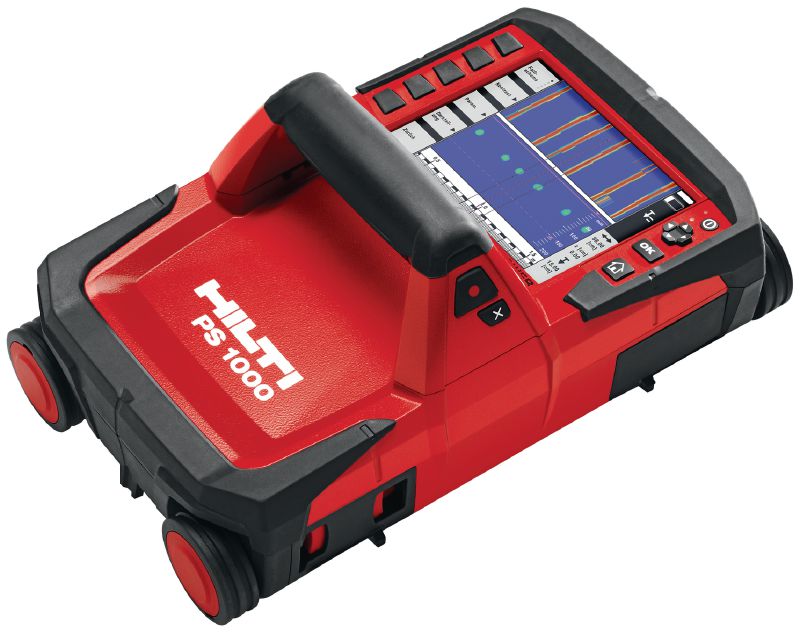Check Out RainierGPR Service Areas for Expert Concrete Scanning
Enhancing Job Preparation and Execution Through Advanced Concrete Scanning Methods
In the realm of job planning and implementation, foresight and accuracy are vital aspects that can make the distinction between success and obstacles. Advanced concrete scanning techniques have emerged as an advanced tool readied to boost the criteria of project monitoring within the building industry. By harnessing advanced modern technology, these methods offer a glance into the architectural stability of a building also prior to the initial block is laid. The effects of such developments are extensive, assuring a paradigm shift in exactly how tasks are approached and supplied.
Benefits of Advanced Concrete Scanning Strategies

Improved Precision in Task Assessments
Enhancing project evaluations via sophisticated concrete scanning methods substantially boosts the precision and dependability of building examinations. By employing advanced scanning technologies such as ground-penetrating radar (GPR) and 3D imaging, task teams can now get in-depth understandings right into the problem of concrete frameworks, determining possible problems or weak points that might not be visible to the naked eye. This enhanced degree of precision in task assessments enables building specialists to make more enlightened choices concerning repair and maintenance techniques, causing improved total job end results.
Furthermore, the raised accuracy in task analyses achieved through innovative concrete scanning methods assists in decreasing the danger of unanticipated problems throughout the construction stage. By proactively spotting hidden anomalies within concrete structures, such as rebar deterioration or voids, task teams can resolve these issues beforehand, avoiding costly hold-ups and revamp later in the job lifecycle. Inevitably, the enhanced accuracy in task analyses promoted by sophisticated concrete scanning techniques adds to higher effectiveness, cost-effectiveness, and high quality in building and construction jobs.
Very Early Recognition of Architectural Challenges
Very early detection of structural challenges plays a critical function in making certain the integrity and security of concrete structures throughout the construction process. Identifying prospective concerns at a beginning enables prompt treatment, preventing expensive rework, timetable delays, and safety and security risks. Advanced concrete scanning methods, such as ground-penetrating radar (GPR) and 3D imaging, make it possible for project teams to reveal surprise flaws, spaces, support layout inconsistencies, and other abnormalities that might jeopardize the structure's stability.
By applying these strategies throughout the planning and execution stages, building specialists can proactively address architectural difficulties prior to they escalate into major problems. For circumstances, detecting inadequate concrete cover over support bars beforehand can stop corrosion and structural weakening in the long run - RainierGPR Service Areas. In addition, recognizing variations in concrete thickness or density can assist optimize material usage and make sure uniform stamina residential or commercial properties across the framework
Inevitably, early identification of structural obstacles with innovative concrete scanning not just improves the total quality and durability of the building yet likewise adds to a safer developed setting for occupants and users.
Improved Precaution in Building And Construction
The application of durable safety protocols is essential in the building industry to mitigate risks and safeguard the wellness of employees and stakeholders. Building and construction websites are inherently hazardous environments, with potential threats varying from falls and tools malfunctions to structural failures. To improve safety measures, building and construction firms are progressively adopting technical developments such as wearable devices that keep track of employees' vital signs and detect prospective health and wellness issues in real-time. Furthermore, using drones for site surveillance permits routine safety and security evaluations without placing personnel in damage's method. Safety training programs have actually also progressed to consist of virtual fact simulations that supply hands-on experience in handling emergency situation scenarios. Furthermore, the integration of expert system in safety and security management systems enables positive identification of possible threats, permitting timely treatments. By prioritizing security via the consolidation of sophisticated modern technologies and detailed training programs, construction projects can considerably minimize mishaps and develop a protected functioning environment for all involved - RainierGPR Service Areas.
Streamlining Project Administration Processes
To maximize operational performance and ensure job success in the construction sector, an emphasis on simplifying job administration processes is necessary. By executing reliable project monitoring processes, construction projects can lessen hold-ups, lower expenses, and enhance total productivity. One crucial aspect of enhancing task administration is using innovative innovations such as Building Info Modeling (BIM) software program, which makes it possible for real-time partnership, clash discovery, and accurate see page project organizing. Furthermore, the adoption of cloud-based task management systems enables for smooth interaction amongst team members, instantaneous access to task information, and the ability to track progression in real-time.

Final Thought
To conclude, the application of advanced concrete scanning strategies supplies many advantages for project preparation and execution. These strategies offer improved precision in project assessments, very early Web Site identification of structural challenges, improved safety and security procedures in building, and structured job management procedures. Integrating these approaches into project operations can ultimately lead to extra effective and effective end results in building projects.
Eventually, the enhanced precision in job analyses facilitated by innovative concrete scanning methods adds to better effectiveness, cost-effectiveness, and quality in building and construction projects. RainierGPR Service Areas.
To enhance operational effectiveness and make certain task success in the construction industry, an emphasis on streamlining job administration processes is crucial. By carrying out reliable project monitoring procedures, building tasks can lessen hold-ups, reduce expenses, and boost overall performance. By simplifying project monitoring processes via technology assimilation, clear communication, and data-driven strategies, construction projects can attain higher effectiveness, cost-effectiveness, and successful results.
These methods offer enhanced precision in project analyses, very early recognition of architectural obstacles, More Bonuses improved security steps in building and construction, and structured project management procedures.